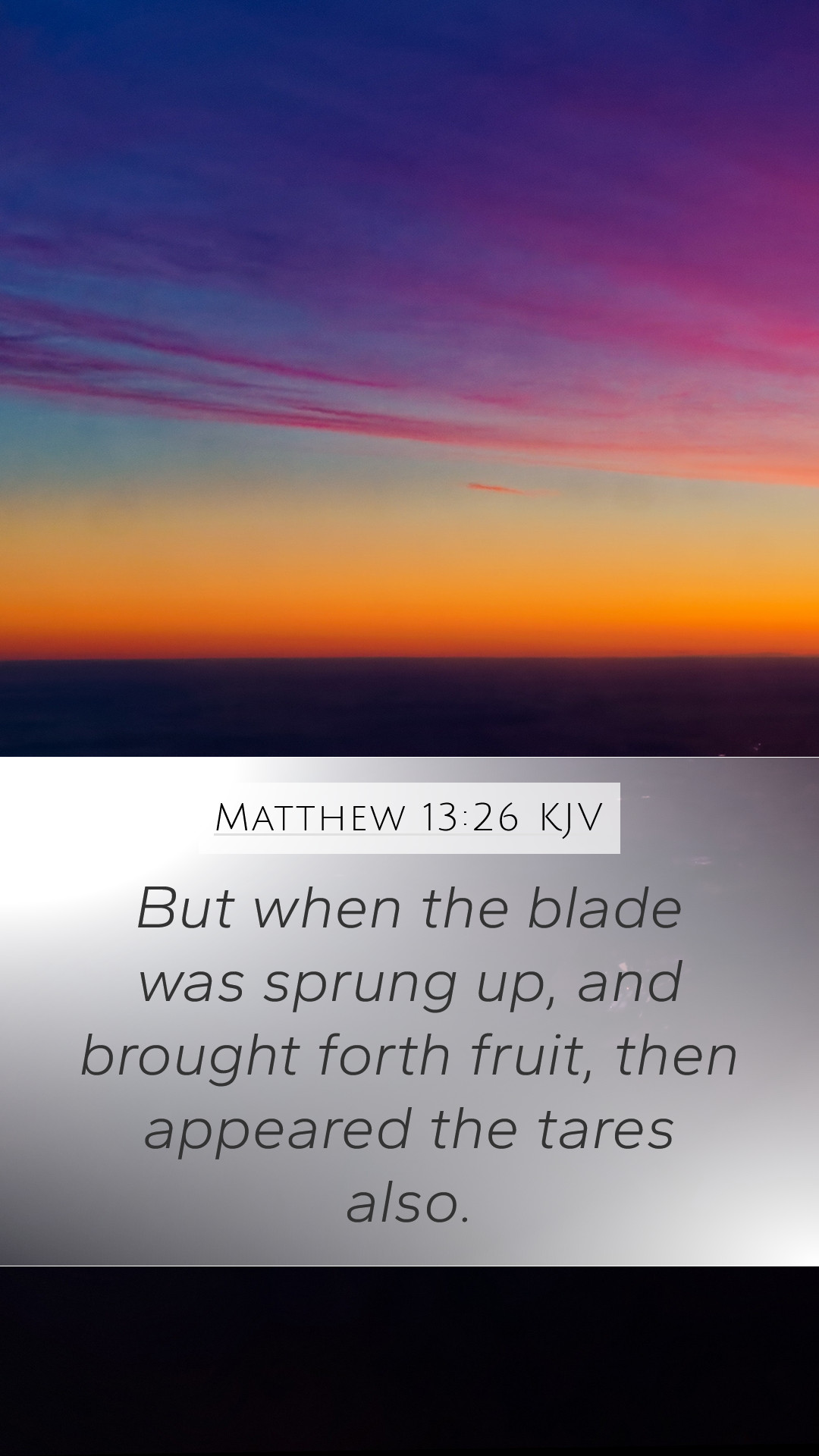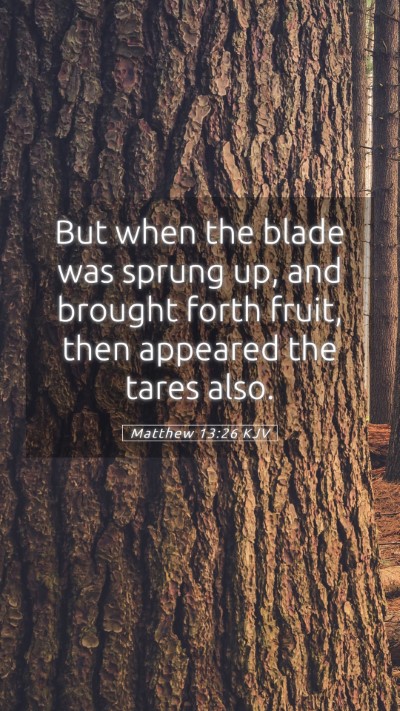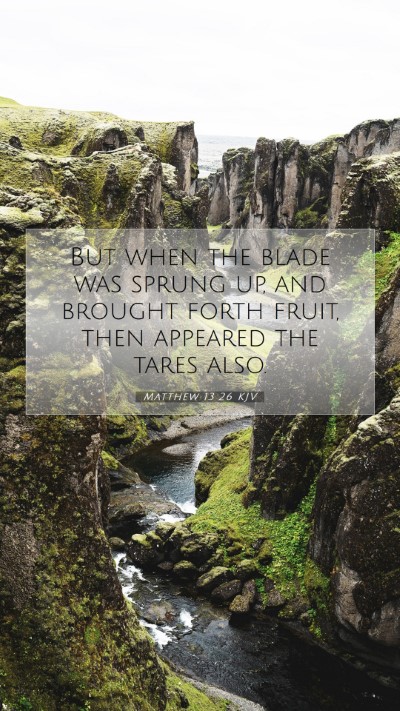Understanding Matthew 13:26
Bible Verse: Matthew 13:26 - "But when the blade was sprung up, and brought forth fruit, then appeared the tares also."
Overview: This verse occurs within the parable of the wheat and the tares, which emphasizes the coexistence of good and evil in the world. It illustrates the process of growth, not just of crops but of God’s kingdom in the world, and the challenge of discerning good from evil.
Insights from Public Domain Commentaries
Matthew Henry's Commentary
Matthew Henry highlights that this verse shows the organic process of growth in God’s kingdom. The appearance of tares (weeds) alongside wheat suggests that within the church and society, there are both true believers and hypocrites. The harvest represents the final judgment, where a separation will be made. Henry articulates that this calls for patience among believers as both growth and the presence of evil are part of the current state of the world.
Albert Barnes' Notes
Albert Barnes emphasizes the inevitability of the presence of tares in the field of wheat. He interprets this as a reflection of the world, where believers must interact with non-believers and where wickedness can be present even in the midst of righteousness. Barnes points out that the lesson emphasizes not the immediate removal of evil, but the importance of waiting for divine judgment at the end of times, when God will distinguish between the righteous and the wicked.
Adam Clarke's Commentary
Adam Clarke elaborates on the cultural significance, noting the context of agricultural practices. He explains that the mention of both the wheat and the tares serves a dual purpose: it reflects the spiritual reality of the church and provides insight into the nature of judgment. In his analysis, Clarke points to the reality that both good and bad grow together until the harvest, underscoring a time of testing for believers and how they must remain steadfast until the end.
Significance of Matthew 13:26
The meaning of this scripture lies in its theological implications about judgment and patience in the midst of evil:
- Coexistence of Good and Evil: Represents the simultaneous presence of righteousness and sin in the world, which believers must navigate.
- Growth and Time: Highlights the importance of spiritual maturity and growth over time, suggesting that God’s work unfolds gradually.
- Divine Judgment: Foretells the ultimate judgment day, wherein God will separate the righteous from the unrighteous.
- Encouragement for Believers: A call for patience and endurance in the face of challenges that arise from a world filled with tares.
Application to Daily Life
This verse encourages believers in their walk of faith. Understanding scripture in this context helps in various ways:
- Living Among Tares: Encourages believers to engage with the world around them without despair, knowing that challenges are part of the spiritual journey.
- Hope in Growth: Reminds Christians that their faith will yield fruit over time, despite the presence of evil.
- Focus on Judgment: Motivates followers to live righteously in anticipation of Christ’s return, emphasizing the importance of their spiritual condition.
Related Scripture References
- Matthew 13:30 - "Let both grow together until the harvest."
- Galatians 6:7-8 - "For whatever a man sows, that he will also reap."
- Revelation 14:15 - "The harvest of the earth is ripe."
Conclusion
In summary, Matthew 13:26 serves as a profound reminder of the tension between good and evil, the necessity for patience in spiritual growth, and the assurance of divine judgment. By studying this verse through various commentaries, we gain a deeper understanding of its implications within the broader context of Scripture. This understanding enriches our Bible study insights and enhances our ability to apply biblical teachings into our daily lives.
For Further Exploration: Engaging in Bible study groups or utilizing online Bible study tools can deepen your understanding of such verses. Exploring Bible study guides and resources can enhance your interpretation and provide broader context surrounding similar scripture.


